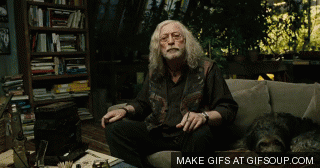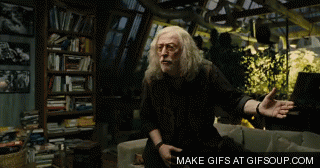spiderman123
Member
10) Jurassic Park
Michael Crichton wrote about many things: alien viruses, intelligent gorillas, dinosaur theme parks, and, of course, baby-molesters who just so happened to be named after Crichton's critics. Too bad he didn't write well. Piling on scientific details at the expense of drama, Crichton was never able to create a single interesting character or tell a story with any real depth, and it shows even in his best-known work, Jurassic Park. It reads less like a fascinating science-fiction tale and more like a term paper with some one-dimensional stereotypes thrown in to read research notes aloud.
Why the Movie's Better: Spielberg takes the idea behind Jurassic Park and gives it all the impact that Crichton never could. The dinosaurs look and sound amazing, and even the usual Spielbergian kids underscore the way a living, breathing Brachiosaurus or Triceratops would turn anyone into an awestruck 8-year-old. And while everything goes by Hollywood rules, there's more personality in Wayne Knight's doughy hacker Dennis Nedry than in the Jurassic Park novel's entire cast. Granted, Crichton's novel spares us the contrivances of a preteen girl fixing everything with a UNIX system, but the movie still comes out ahead.
9) Watership Down
What does Watership Down teach us about rabbits? Well, they live in socially regimented warrens, they have special words for everything, and they worship their own patron gods of life and death. Oh, and rabbits are also furry little killing machines. Watership Down begins with a mystic young rabbit foreseeing the savage destruction of his home warren, and it ends with the survivors of that warren fighting a vicious battle where bunnies tear out each other's throats. All of this started out as a novel by Richard Adams, and director Martin Rosen turned it into an animated film that sneaks all sorts of lapine violence and disturbing hallucinations past parents.
Why the Movie's Better: Adams' novel is, in a word, tedious. It discusses rabbit traditions and folklore like a textbook, and most of the characters are subsumed in a broader story. The movie skips some of the book, but it improves it across the board. The rabbits are all much more distinct and appealing, and the film hits harder by implying things that the book openly states. It's a much tenser story in movie form, and it has Zero Mostel playing a foul-mouthed seagull.
8) Blade Runner
Science fiction author Philip K. Dick had plenty of interesting ideas both before and after he went batshit crazy. Despite its cumbersome title, his novel Do Androids Dream of Electric Sheep? puts forth many troubling questions in a future where mankind lives in bleak, grimy little cities. The "androids" of the story are biologically made and physically indistinguishable from humans, but they're still non-persons who are executed if they're caught on Earth. And in a book where most of the human characters are numb emotional zombies, the alleged robots seem a lot more sympathetic.
Why the Movie's Better: Intriguing as Dick's novel is, it didn't have the richly detailed setting or the vast impact of Blade Runner. Ridley Scott's movie went through a bunch of director's cuts and re-edits, but the film still offers a fascinatingly downtrodden look at the future, pioneering the whole cyberpunk movement that inspired everything from Ghost in the Shell to an underrated David Bowie album. Oh, and Blade Runner also brought us one of the most memorable death scenes in the history of science fiction films, shown above. That helps.
7) Vampire Hunter D: Bloodlust
Yoshiaki Kawajiri isn't a director known for showing female characters respect, especially not when he's adapting books by Hideyuki Kikuchi. After all, the Kikuchi-Kawajiri collaboration of Wicked City introduced many an impressionable young anime viewer to the textbook definitions of "tentacle porn" and "anime misogyny." In 2001, Kawajiri made a film based on Kikuchi's third Vampire Hunter D novel, Demon Deathchase, and it follows the half-vampire D as he tracks down a high-society young woman and the vampire that apparently kidnapped her. The search grows complicated: the alleged damsel in distress actually ran away with her vampire boyfriend, and they're also being hunted by a woman named Leila and her monster-killing cohorts, the Marcus Brothers.
Why the Movie's Better: For one thing, Leila isn't raped by the Marcus Brothers in Kawajiri's movie, though that happens throughout the book. Kikuchi's novel is uglier and creepier all around, while Kawajiri's film excises the awful crap and turns just about everyone into sympathetic characters. The movie also delivers sharp gothic atmosphere in ways that the Vampire Hunter D books never manage. Kawajiri can pull off dark action flicks like no one else in animation, and for once he does it all without degrading women.
6) Carrie
Stephen King's Carrie is remembered chiefly for drenching Sissy Spacek in pig's blood, but it also introduced pop-horror to the idea of a bullied teenager getting psychic revenge on an entire school. That same idea emerges in far too many lousy modern horror flicks to name, but Carrie holds up, at least in Brian De Palma's film.
Why the Movie's Better: Carrie was King's first published novel, a distant and frequently awkward attempt. King aims for the same epistolary tone as Bram Stoker's Dracula by stitching together a story from letters and article excerpts, and it doesn't work all that well. De Palma's film goes right to the heart of things, and it benefits from having Spacek, Piper Laurie, and a pre-Robocop Nancy Allen on board. It's the movie that cemented Carrie's themes in the horror lexicon, right down to the last-minute surprise.
5) Jaws
A lot of Jaws worked entirely by accident. The film's less-is-more approach to scares resulted from unreliable mechanical sharks, and the script didn't get much good material from Peter Benchley's book, a shaky, written-to-order pulp thriller. It's not a particularly good book. It was just the first one to effectively exploit the idea of a shark terrorizing humans.
Why the Movie's Better: Well, it's actually scary. And the characters are all likable, thanks to Robert Shaw's turn as gruff shark-killer Quint, Roy Scheider as put-upon Chief Brody, and Richard Dreyfuss as whiny marine biologist Hooper. True, Spielberg's movie loses some of the book (including an affair between Hooper and Brody's wife), but one shouldn't mistake a longer story for a better one.
4) The Iron Giant
Ted Hughes' The Iron Man is a touching children's tale, written for Hughes' children after the death of his wife, Sylvia Plath. That subtext didn't make it into Brad Bird's 1999 film The Iron Giant, but the deal's the same: a towering robot crashes on Earth, befriends a troubled boy, and shows us that humans aren't the only ones with souls.
Why the Movie's Better: It's a tough call, but Hughes, esteemed writer though he is, puts an intergalactic dragon in the book so the Iron Man can fight it. That detracts a little from the story's unflattering reflections on the human race. In the movie, people are the biggest problem, and the story is better because of that. And no one says goodbye like the movie's Iron Giant.
3) Who Framed Roger Rabbit?
Though its source is largely forgotten now, Who Framed Roger Rabbit? was indeed based on a book: a 1981 mystery-comedy by Gary Wolf. The original novel was slightly different, though. Instead of peopling a 1940s murder case with famous cartoon characters, Wolf's book is set in a modern age where comic-strip characters live, work, and bicker with humans. The 1988 film, a landmark hybrid of live-action and animation, changed a lot, though it kept Roger, Jessica, Baby Herman, and some of the book's other original characters.
Why the Movie's Better: Wolf's novel is one-note in its humor, and its use of comic-strip characters like Dagwood and Garfield isn't nearly as fun as the movie's panoply of classic cartoon cameos. The whole idea behind the book also works better in cinema, where Bob Hoskins can toss around a goofball rabbit and Christopher Lloyd can dunk a squeaking cartoon shoe in acidic Dip, scarring untold numbers of children.
2) Scott Pilgrim Vs. the World
Bryan Lee O'Malley's Scott Pilgrim is a very lucky comic book. It strikes a clumsy mix of magical realism and hipster self-mockery as its hero fights his would-be girlfriend's seven evil ex-lovers. In the process, he grows from a bland, insufferable man-child into a bland, insufferable semi-adult. In fact, the whole thing is reminiscent of a run-of-the-mill webcomic, right down to the cutesy video-game references and the forcedly "wacky" lead being inexplicably pursued by five or six female characters. And for some reason, it won over fans and became a movie.
Why the Movie's Better: Luckily, that movie was directed by Edgar Wright, who brought us Hot Fuzz and Shaun of the Dead. The comic's weird premise and self-indulgent sight gags play out much better in movie form, especially when the music, so drably conveyed in print, is provided by Beck, Broken Social Scene, and Metric, among others. In truth, most of Scott Pilgrim vs. the World's problems come from it not changing enough of the comic. The movie discards some of the comic's plot, leaving characters like Kim and Envy with only half-explored backstories, but, once again, more story isn't always better.
1) Starship Troopers
Robert Heinlein's Starship Troopers didn't invent the idea of space marines, but it popularized the image of hardened soldiers using high-tech weaponry in a desperate yet awesome galaxy-wide battle against some alien menace. Starship Troopers also introduced a world where war is glorified, only government-service veterans can vote, capital punishment is widely practiced, and it all works out to create a perfect world where the only danger comes from giant space insects. Decades after the book's debut, Robocop director Paul Verhoeven turned Starship Troopers into a film that gives Heinlein's novel all the respect it deserves.
Why the Movie's Better: In other words, Verhoeven tore the book to shreds. Though he never finished reading the novel and at first intended to make an unrelated film, Verhoeven's Starship Troopers is a magnificent savaging of Heinlein's naïve war-porn fantasy. It shows a future of pretty and stupid young people (including Casper Van Dien, Denise Richards, and the criminally underappreciated Dina Meyer) gleefully marching off to a war where the intergalactic bugs deserve only death, the good guys' uniforms are suspiciously Third Reich, and no one thinks too much about why they're fighting. The film works as both an engagingly shallow cinematic bloodbath and a not-implausible satire of Heinlein's utopia. Sometimes the best way to adapt a book is to wreck it.
http://www.toplessrobot.com/2010/11/the_10_nerd_movies_most_superior_to_their_books.php?page=2


